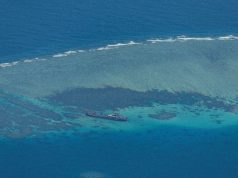
BEIJING – Ambassador to China Jose Santiago Sta. Romana told journalists at the weekend that the bilateral consultative mechanism for addressing the issues in the South China Sea/West Philippine Sea territorial dispute will be discussed next week, or after mid-May.
The disclosure by Ambassador Sta. Romana came as President Rodrigo Duterte arrived in Beijing Saturday evening to attend the People’s Republic of China’s One Belt One Road (OBOR) summit.
The first of the serial consultative meetings will be taking place at the sidelines of the ASEAN-China Summit to be held in Southwest China, to be graced by the foreign affairs officials of both sides.
According to Sta. Romana, the initial session will tackle the terms of reference, as well as lay down the agenda of the meetings, to firm up the process to be followed for succeeding meetings.
The consultative meetings are to be held, prospectively, twice a year.
This development fulfills one of the 13 agreements between the Philippines and China that were forged when President Duterte visited China late last year.
Ambassador Sta. Romana said the maritime talks will not affect Duterte’s attendance in the OBOR summit from Sunday to Monday.
The Philippine tack is to separate the South China Sea dispute from other issues, such as trade and commerce, in order not to unduly affect the economic roadmap of the country and to keep relations between the Philippines and China from losing steam.
Incoming Department of Foreign Affairs Secretary Alan Peter Cayetano shuns from using so-called megaphone diplomacy in this situation: “This is precisely the mechanism where you don’t use megaphone diplomacy.
“You talk to each other directly. You come up with issues and, sometimes, to understand the other side’s position, even though you don’t agree with each other, is the first step to build the bridge of understanding.”
“If you put the dispute in front,” Sta Romana pointed out, “on the center of bilateral relations, then you’d have to resolve that first before you can have trade, before cultural links. The result is the relation will be frozen, because it can’t be resolved overnight.
“To put it on a separate track is not to abandon or give up, but rather to prevent it from getting compartmentalized, so as not to affect the other aspects where there are no disputes.”









